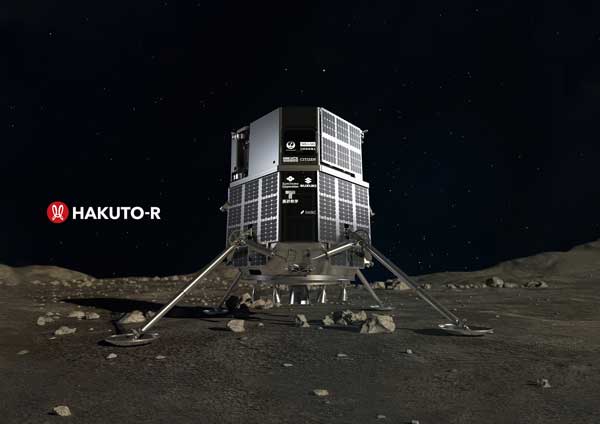
SpaceX Falcon 9 Launches Private Mission to Land on Moon (Image Credit: Payload)

A SpaceX Falcon 9 launched a private mission on Sunday to place a Japanese lander and an United Arab Emirates’ rover onto the surface of the moon, and an American spacecraft into lunar orbit that will search for water ice on the surface.
Falcon 9 lifted off at 2:38 a.m. from its launch pad at the Cape Canaveral Space Force Station in Florida. The booster placed ispace’s Hakuto-R lander and NASA’s Lunar Flashlight CubeSat orbiter on a course for the moon.
Falcon 9 Lunar Launch Major Payloads
| Spacecraft | Purpose | Organization | Nation |
|---|---|---|---|
| Hakuto-R | Lunar lander | ispace | Japan |
| Rashid | Lunar rover | UAESA*/MBRSC+ | UAE |
| SORA-Q robot | Lunar rover | JAXA^ | Japan |
| Lunar Flashlight | Lunar orbiter | NASA | USA |
+ Mohammed Bin Rashid Space Centre
^ Japan Aerospace Exploration Agency
Source: Wikipedia
Hakuto-R is carrying 30 kg (66 lb) of commercial and government payloads, including:
- United Arab Emirates’ Rashid lunar rover
- Japan Aerospace Exploration Agency (JAXA) SORA-Q transformable lunar robot
- NGK Spark Plug Co. solid-state battery test module
- Mission Control Space Services Inc.’s artificial intelligence (AI) flight computer
- Multiple 360-degree cameras from Canadensys Aerospace
- Music disc with the song “SORATO” performed by Japanese rock band Sakanaction, an original supporter of Team HAKUTO during Google Lunar XPRIZE
- Panel engraved with the names of Team HAKUTO crowdfunding supporters during Google Lunar XPRIZE.

Hakuto-R will take about three months to reach the moon using a low-energy transfer trajectory. The lander will collect a sample of regolith and transfer ownership to NASA under a contract during its planned 14-day mission on the surface. The lander is not designed to survive the cold of the lunar night.
Hakuto-R will land in the Atlas Crater in the northwest quarter of the moon. The impact crater is about 87 km (54 miles) across.
The Rashid rover is a collaboration of the UAE Space Agency and the Mohammed Bin Rashid Space Centre. The rover is equipped with a microscopic camera, a thermal imaging camera and a Langmuir probe that will study lunar plasma in an attempt to discover why moon dust is sticky.
Japan’s SORA-Q transformable robot is designed to move across the surface to gather data for the design of a pressurized crewed rover. The robot was jointly developed by JAXA, TOMY Company, Sony Group and Doshisha University.

ispace began as Team HAKUTO to compete in the $30 million Google Lunar XPRIZE competition, which sought to have private companies land rovers on the moon. The competition ended in March 2018 without a winner.
ispace continued on after the prize, raising private funding as the company planned a series of missions to the moon. ispace has subsidiaries in the United States and Europe.

NASA’s Lunar Flashlight orbiter will use a laser to search for water ice in permanently shadowed areas of the moon. The 6U CubeSat was developed by a team from the Jet Propulsion Laboratory, Goddard Space Flight Center, Marshall Space Flight Center and the Georgia Institute of Technology.
There’s more information about the mission here.








